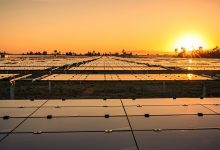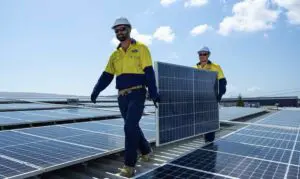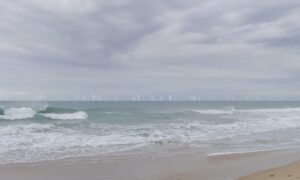Renewable energy and battery storage developer Genex Power has found a new major off-taker for its giant Bulli Creek solar and battery project in Queensland, which will be the biggest in the country.
The company – now fully owned by Japan’s J-Power after a takeover earlier this year – announced on Tuesday a 15-year power purchase agreement with Stanwell, the state government owned utility that is transitioning away from coal to a mix of wind, solar and storage.
The deal with Stanwell will account for 550 megawatts (MW) of capacity and will enable Genex to proceed with the 775 MW first stage of the project. Construction is due to start in early 2025. At full capacity, the Bulli Creek precinct could host up to 2 GW of solar and battery storage, depending on future agreements.
Genex had hoped to secure Andrew Forrest’s Fortescue Energy as its first major off take partner for the project, but that deal fell through after Fortescue had second thoughts about the Gibson Island hydrogen project it proposed to build near Brisbane.
Genex confirmed that its agreement with Fortescue – which was to be for 337 MW – has been terminated, although given the scale of the entire project there is room for Fortescue to return to the table if the prospects for its Gibson Island green hydrogen plans improve.
Genex CEO Craig Francis says the new deal with Stanwell will enable the company to secure debt and equity finance.
“The 15-year offtake agreement at Bulli Creek will enable Genex to progress the project swiftly toward a final investment decision later this year, delivering 775MW of new renewable energy capacity in Queensland from 2027.”
Francis also told Renew Economy that the first battery component – potentially sized 600 MW and 2,400MWh, which is bigger than any other battery under construction in Australia right now – is still very much on the cards.
The shared grid connection will take a couple of years so the plan is to get solar and grid going and commit the BESS in 2026 to come online shortly after solar is commissioned in 2027.
“The shared grid connection will take a couple of years so the plan is to get solar and grid connection work going and commit the BESS in 2026 to come online shortly after solar is commissioned in 2027,” he said.
The Bulli Creek facility is located 125kms south-west of Toowoomba, ironically in the electorate of Maranoa held by Nationals leader David Littleproud, who has vowed to stop new wind and solar developments around the country, and even tear up federal government contracts.
Genex says the project will create 800 jobs during construction, and when complete in 2027 will be the largest solar farm connected to the country’s main grid, known as the National Electricity Market – although it may quickly be overtaken by other projects such as Rio Tinto’s gigawatt scale Upper Callipe solar project, also in Queensland.
The deal with Stanwell will include a five year operations and maintenance deal for the 50 MW Kidston solar farm, which is already operating and will be part of the Kidston green energy hub that will include a wind farm and the pumped hydro project also under construction.
Kidston is the second solar farm contract for Stanwell’s new maintenance arm. The first, signed in July, is a five year contract with Ratch Australia to look after its 42 megawatt (MW) Collinsville solar farm near Townsville in the state’s north.
SAMCo also has service maintenance contracts in place for Wambo Wind Farm Stage 1 and Wambo Wind Farm Stage 2, currently under construction in Queensland’s Western Downs.
Stanwell CEO Michael O’Rourke said Stanwell is targeting up to 10 GW of renewable energy capacity by 2035.
“Our partnership with Genex is an essential element of Stanwell’s portfolio transformation and will accelerate the delivery of our renewable energy pipeline in line with the Queensland Energy and Jobs Plan,” Stanwell CEO Michael Rourke said in a statement.
“SAMCo’s contract locks in additional jobs in the renewable sector and showcases our ability to leverage our highly skilled workforce and experience to optimise the performance of renewable energy assets like those at Kidston Solar Farm.”








